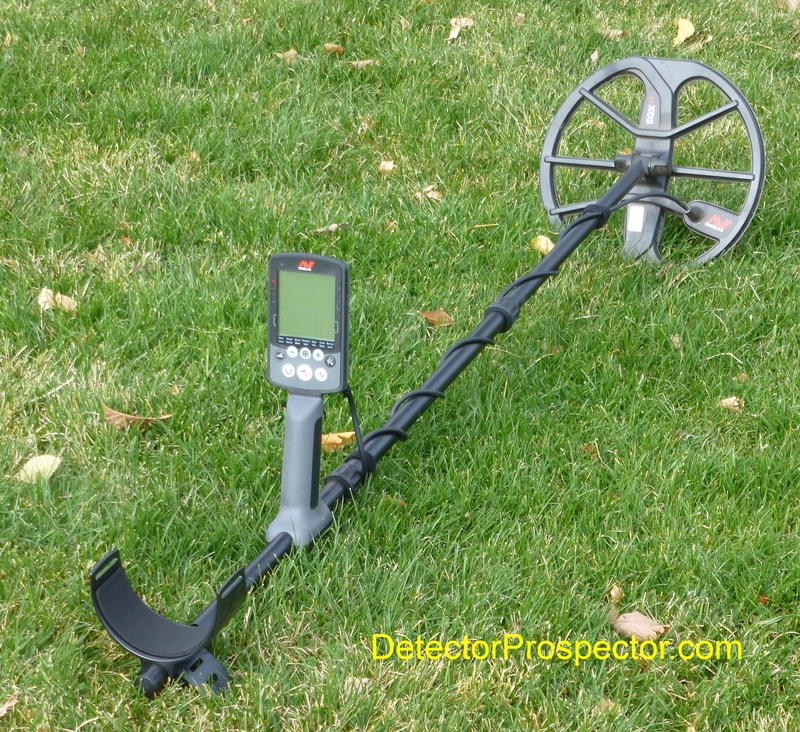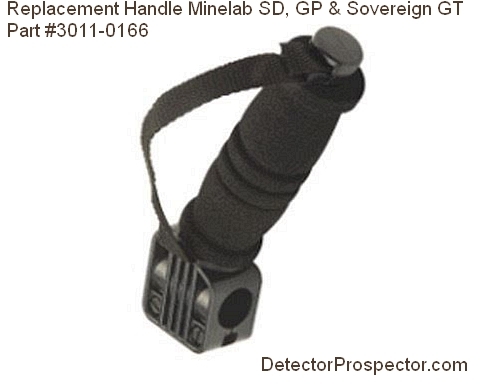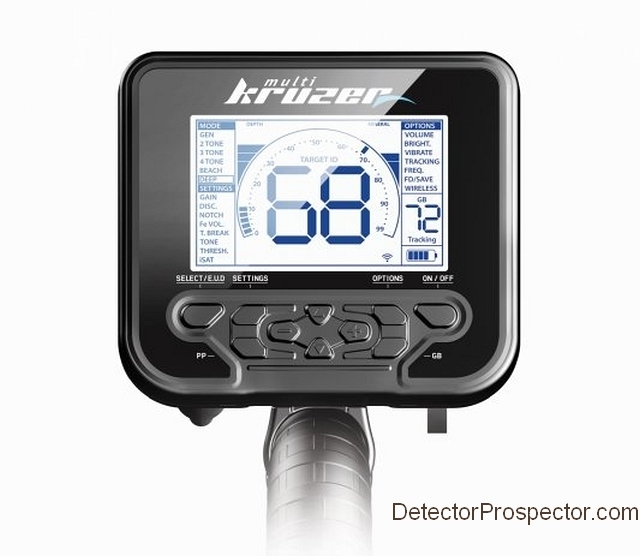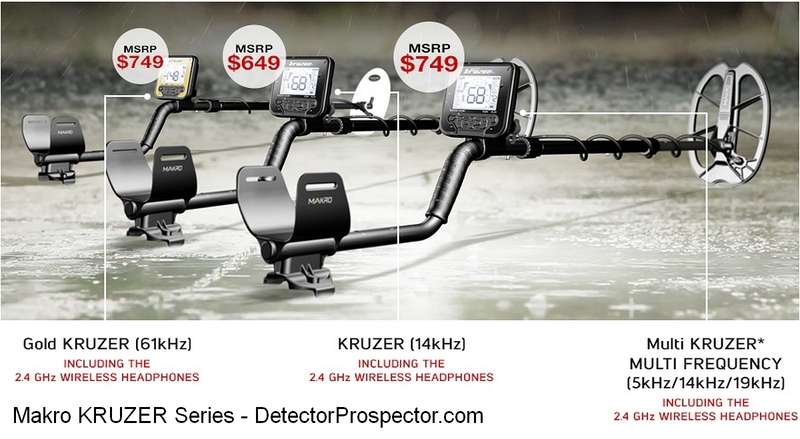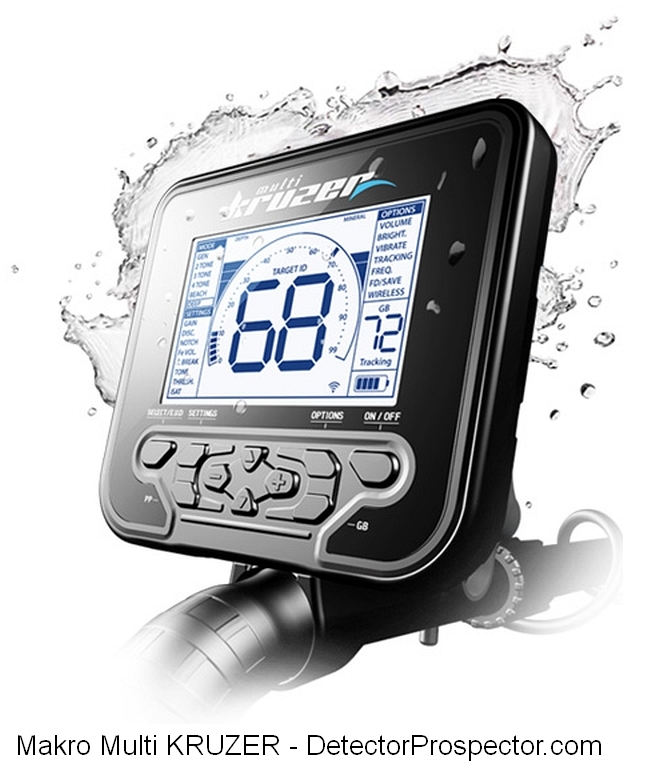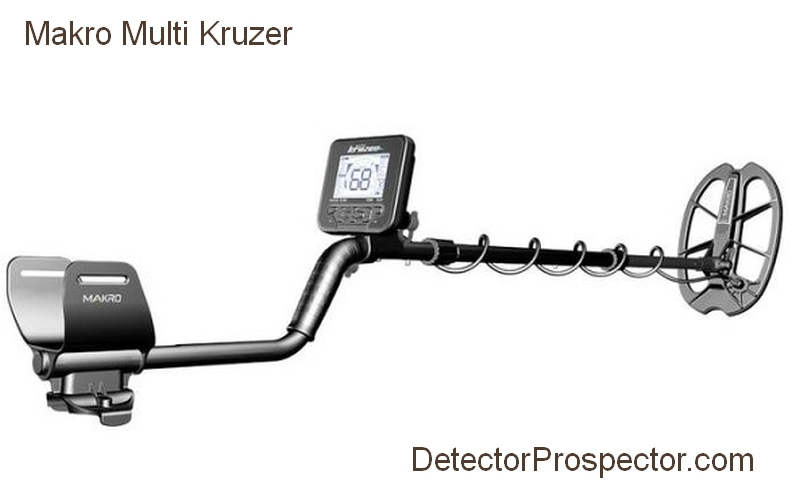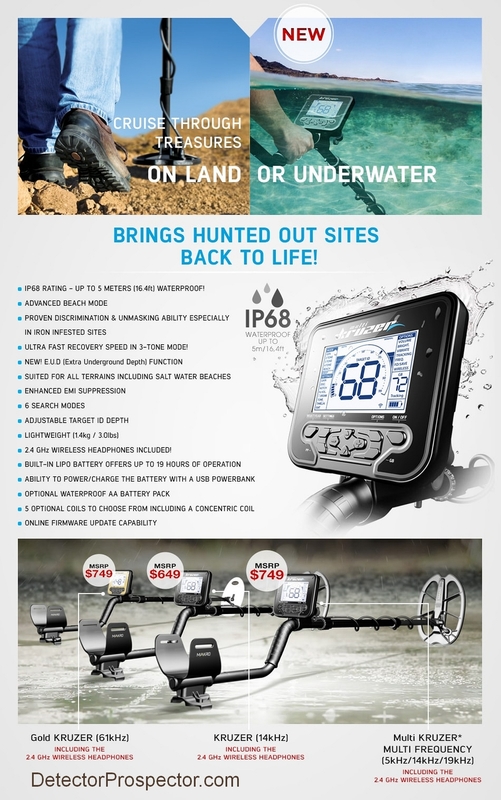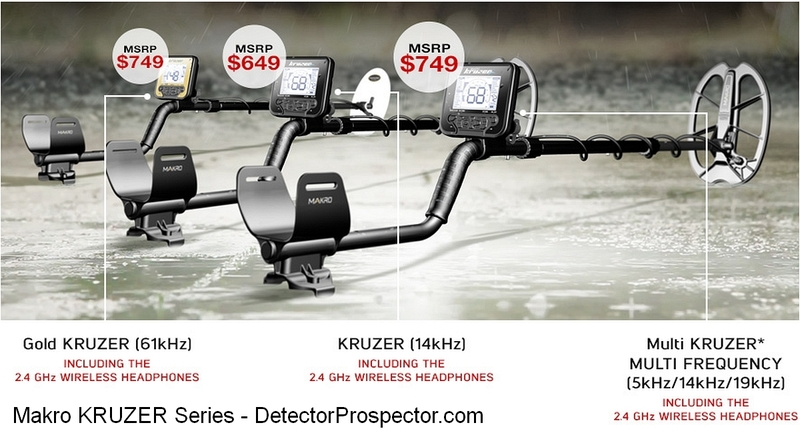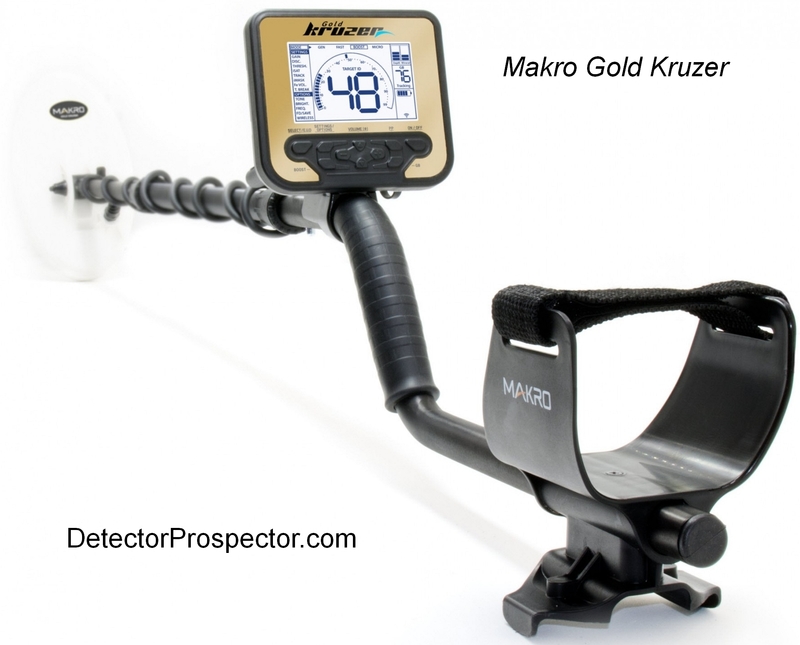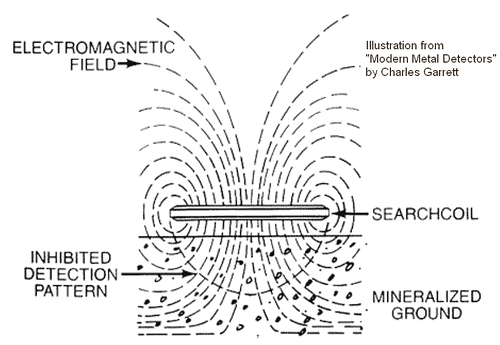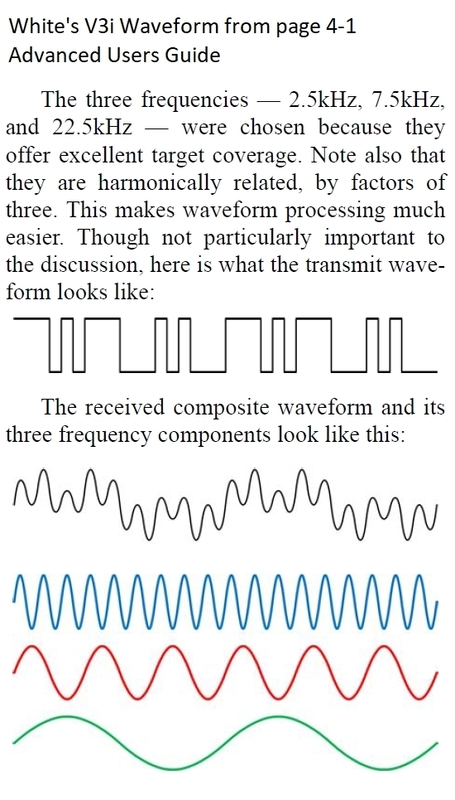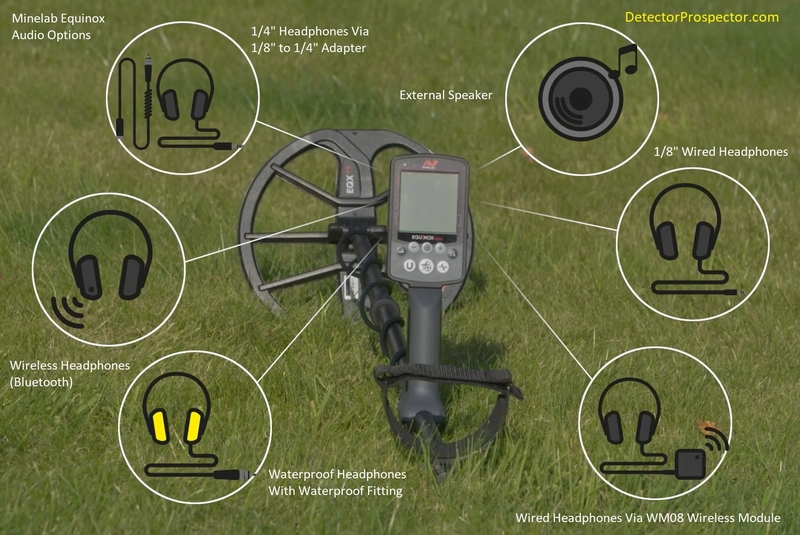-
Posts
19,802 -
Joined
Content Type
Forums
Detector Prospector Home
Detector Database
Downloads
Everything posted by Steve Herschbach
-
The Equinox can employ automatic ground tracking. I don’t know what methodology is used. There is no control for ground balance adjustment speed. Tracking is either on or off.
-

Equinox Stand Will It Keep It Upright ?
Steve Herschbach replied to Ridge Runner's topic in Minelab Equinox Forum
The Equinox is pretty boring in this regard - it is solidly average and not much different than the majority of detectors on the market. In other words not particularly prone to tipping over but easy enough to knock over. It’s been a non-issue for me. -

Equinox And Monty's Nail Board
Steve Herschbach replied to johnedoe's topic in Minelab Equinox Forum
Well I did not say it has no advantage, just that compared to BBS and FBS Equinox seems to struggle more with flat steel. Unfortunately I can't make any better comparison than that because of last minute tweaks (Iron Bias) and my lack of any real time using the Equinox directly compared to the units in question under conditions that would allow me to comment with confidence. I was confident enough that the final version Equinox was going to be at least as good if not better than the competition that I went all in with it personally, selling my Impact and even my CTX. I have a lot of respect for the NokMak detectors however and know they can get the job done in the right hands. One area it would appear NokMak has the edge for the foreseeable future is coil selection, and that more than the detector itself can provide the edge needed in dense trash. I know it's not fair to compare an Equinox with 11" round DD coil to an Impact with a small concentric coil but I have never been one to play fair with detectors. I have two ghost towns on my hit list as soon as I can make the time for it - hopefully soon. The thing is at this point I am no longer testing Equinox against other detectors, as I did enough of that already to be able to decide which direction I wanted to go. From here on out I am just taking Equinox detecting and doing the best I can, but how it fares against other detectors is now in the hands of others to sort out. I am recusing myself from all that both due to my direct involvement with Equinox plus an actual lack of interest on my part. Once I make a decision I am not one to second guess myself and so while how Equinox compares to other detectors is of burning interest to others for obvious reasons, it is not on my radar. All I honestly want like everyone else is for the thing to wrap up and ship! -
Charts are usually constructed using simple air tests. The big caveat on all discrimination systems is that ground effects and nearby targets can cause target id numbers to read both lower and higher, so all this really only works on relatively isolated targets in mild ground. It all goes out the window for anything more complex, and in places like Europe with thousands of years of history with different types of finds to be made, you simply dig all non-ferrous targets. Therefore constructing charts they are only for reference under perfect conditions, and they must be able to be duplicated by others. Air test with moderate sensitivity a few inches from the coil. You want clean, solid repeatable numbers. Trying to go farther will just give you erratic numbers that bounce all over the place.
-
Yes, as discussed earlier on this same thread All detectors, no matter the frequency, etc. cannot be more sensitive than what it takes to detect salt water if you want to detect on a salt water beach. If you make the machine more sensitive, it will pick up the salt water. There are numerous small items that read identical to salt water, in particular small or thin gold and platinum jewelry. If the detector is made to find this stuff, it WILL detect salt water. If you make the detector ignore salt water, it WILL miss these items also. There is no fix for that, VLF, PI, multifrequency, it does not matter. The salt range and the small non-ferrous range overlap. Beach Mode is as hot as it can be made on gold without detecting salt water. That is the unavoidable speed limit. The simple way to get around it is to use a hotter mode, but then you WILL detect wet salt sand and salt water. You have to decide up front - do you want to detect items that read exactly like salt water? Then go hot, but you will have to avoid salt water and wet salt sand. Or, do you want the detector to not signal on wet salt sand? Great, use Beach Mode, but know that it will miss items that read exactly the same as salt water. Everyone seems to think they can have their cake and eat it too in this matter. You can’t. Not using current technology.
-
There are quite a few areas of conflict and confusion when it comes to metal detector terminology. The manufacturers largely agree on some things, but now and then one will toss in a monkey wrench to confuse things. It has been on my mind as the subject of an article at some point. Some examples: automatic ground balance - this can mean preset ground balance, "ground grab" or ground tracking all metal mode - this can mean a true unfiltered all metal mode or a discrimination (filtered) mode set to accept all metals multifrequency - this until recently meant a detector processes multiple frequencies at the same time. Now it can also mean a detector that allows you to select a single frequency from a choice of multiple frequencies. Minelab Metal Detector Terminology Tesoro Detecting Glossary White's Glossary of Terms
-

New 61 Khz Makro Gold Kruzer
Steve Herschbach replied to Steve Herschbach's topic in Nokta / Makro Metal Detectors
Yes, confirmed, three selectable frequencies. -

New 61 Khz Makro Gold Kruzer
Steve Herschbach replied to Steve Herschbach's topic in Nokta / Makro Metal Detectors
I am assuming for now that the Multi Kruzer is selectable single frequency like the Nokta Impact, not actual multifrequency. I wish Nokta/Makro had not done that. Up until now everyone in the metal detector industry agreed that multifrequency meant simultaneous multiple frequency operation. Now explanatory asterisks have to explain even that term. Maybe Makro will surprise me and say otherwise however so take this post with a grain of salt. Selectable Frequency And Multiple Frequency -

Mono Coil Versus DD Depth Difference
Steve Herschbach replied to WesH's topic in Minelab Metal Detectors
After the GPX came out I quit running DD coils. A DD can aid with ferrous trash (the GPX disc function only works with DD coils) or electrical interference (the GPX cancel mode is designed for DD coils). DD coils can also help with the worst of the worst ground. For me though its mono all the way. -

New 61 Khz Makro Gold Kruzer
Steve Herschbach replied to Steve Herschbach's topic in Nokta / Makro Metal Detectors
At a waterproof 3 lbs I would think the Multi Kruzer will put a dent in Nokta Impact sales, it being not waterproof and 4.2 lbs for about the same price. The Gold Kruzer at a waterproof 3 lbs and 61 kHz with built in wireless looks to shake up the "over 30 khz" single frequency nugget detector market. Fisher Gold Bug 2 71 khz 2.9 lbs $764 Makro Gold Kruzer 61 khz 3.0 lbs $749 (includes two coils) Makro Gold Racer 56 kHz 3.0 lbs $699 Minelab Gold Monster 45 kHz 3.2 lbs $799 (includes two coils) White's GMT 48 khz 3.9 lbs $729 Note that the Makro Gold Racer is $699 with one coil and the Gold Kruzer $749 with two coils. That would seem to effectively kill the Gold Racer unless they drop the price. (2/8/2018 Note - at least one dealer has dropped Gold Racer to $594) -
That was the intent when I started the Minelab Equinox Advanced User's Guide but I stalled out on it from being too busy plus things being in a state of flux have made it a moving target. But yes, I still intend on plugging away on it.
-

The New Makro Kruzer Series!
Steve Herschbach replied to Nokta Detectors's topic in Nokta / Makro Metal Detectors
The Multi Kruzer lets you select between 5 kHz, 14 kHz, and 19 khz similar to the Nokta Impact ability to select between 5 kHz, 14 kHz, and 20 kHz. Selectable Frequency And Multiple Frequency -

The New Makro Kruzer Series!
Steve Herschbach replied to Nokta Detectors's topic in Nokta / Makro Metal Detectors
Looks awesome Dilek, thanks for posting! The new Makro KRUZER series includes the new 14 kHz Makro Kruzer, the 61 khz Makro Gold Kruzer, and the Makro Multi Kruzer, which can run at 5 kHz, 14 kHz, or 19 khz. Series features: IP68 Rating - Up to 5 meters (16.4 feet) waterproof! Advanced Beach Mode Proven Discrimination & Unmasking Ability Especially In Iron Infested Sites Ultra Past REcovery Speed In 3-Tone Mode New! E.U.D. (Extra Underground Depth) Function Suited For All Terrain Including Salt Water Beaches Enhanced EMI Suppression Six (6) Search Modes Adjustable Target ID Depth Lightweight 1.4 kg / 3.0 lbs 2.4 Ghz Wireless Headphones Included! Built-In LiPo Battery Offers Up To 19 Hours Of Operation Ability To Power / Charge The Battery With A USB Powerbank Optional Waterproof AA Battery Pack Five (5) Optional Coils To Choose From Including A Concentric Coil Online Firmware Update Capability The new Makro Kruzer series will begin shipping in February 2018. -
Makro has just introduced a new lineup of metal detectors waterproof to five meters (16.4 feet) that includes a new prospecting model - the Gold Kruzer. The Gold Kruzer is no doubt based on the earlier 56 kHz Makro Gold Racer but at a slightly higher frequency. The Gold Kruzer only weighs 3.0 lbs and runs for up to 19 hours off the built-in rechargeable LiPo battery. The stock coil is a 5.5" x 10" DD coil with optional coils available. The Makro Gold Kruzer comes with 2.4 Ghz wireless headphones and has online firmware update capability. The new Gold Kruzer will sell for $749.00 Update 6/15/18 - Detailed Review of Makro Gold Kruzer by Steve Herschbach ----------------------------------------------------------------------------------------------------------------------------------- The new Makro KRUZER series also includes the new 14 kHz Makro Kruzer as well as the Makro Multi Kruzer, which can run at 5 kHz, 14 kHz, or 19 khz. Series features (not all apply to Gold Kruzer): IP68 Rating - Up to 5 meters (16.4 feet) waterproof! Advanced Beach Mode Proven Discrimination & Unmasking Ability Especially In Iron Infested Sites Ultra Past REcovery Speed In 3-Tone Mode New! E.U.D. (Extra Underground Depth) Function Suited For All Terrain Including Salt Water Beaches Enhanced EMI Suppression Six (6) Search Modes Adjustable Target ID Depth Lightweight 1.4 kg / 3.0 lbs 2.4 Ghz Wireless Headphones Included! Built-In LiPo Battery Offers Up To 19 Hours Of Operation Ability To Power / Charge The Battery With A USB Powerbank Optional Waterproof AA Battery Pack Five (5) Optional Coils To Choose From Including A Concentric Coil Online Firmware Update Capability Makro Kruzer Color Brochure The new Makro Kruzer series will begin shipping in February 2018. Click for larger view...
-

Mono Coil Versus DD Depth Difference
Steve Herschbach replied to WesH's topic in Minelab Metal Detectors
I was hoping you would chime in JP - great explanation, thanks! I have yet to observe the famous DD blade as sold by marketers actually exhibit itself on a coil. Just take a DD coil and a coin and run some brief air tests (see article below under heading "Target Size"), and except for tiny objects the blade thing is largely myth. All the DD thing does is cause the electromagnetic field to elongate and become a little shallower compared to a mono coil (or concentrics on VLF detectors). The field of a mono coil as defined by a coin finding the extremity of the field is more like a basketball cut in half - a bowl. A DD coil is more like a U.S. football cut in half lengthwise - an elongated bowl. You can only see this on a VLF detector running in all metal or pinpoint mode. Discrimination modes reduce most signals to a simple beep, and a VLF concentric will indeed beep more in the middle of the coil whereas the beep generated by a DD coil elongates along the overlap. The rest of the electromagnetic field is there however, it is simply being hidden by the single report nature of disc modes of operation. This article below is about induction balance detectors and some of the diagrams are exagerrated but it provides a decent overview of coils, electromagnetic fields, and eddy currents. Excerpt from "Modern Metal Detectors" by Charles Garrett -

Lobo ST With Hot Technology 3x18 Coil
Steve Herschbach replied to Don in SoCal's topic in Compass, D-Tex, Tesoro, Etc.
It's not impossible that the coil has an issue. One reason Tesoro stopped making that version was difficulty getting reliable performance. I had one myself for my old Vaquero and it balanced fine in all metal. Part of the problem may be that Tesoro detectors and coils are tuned as a matched set. If may be that returning the coil and detector to the factory could result in better operation is they were tuned up together; I would almost bet on it. However, that might mess the machine up for use with other coils. I sent one of these coils to White's to see if it could be mated to the MXT and Dan Geyer was unable to do it for the reason mentioned above (White's coils are not part of the tuned circuit in the way Tesoro coils are). -
Yes, what Chase said. You turn off the "Salt Mode" by exiting "Beach Mode". The two names would be interchangeable, and "Salt Mode" might actually be better because it really is for saltwater beaches, not freshwater beaches. In order or "hotness" : Hottest (more sensitive to small targets, hot ground/rocks, and saltwater) 1. Gold Mode 2. Park Mode 2 and Field Mode 2 3. Park Mode 1 and Field Mode 1 4. Beach Mode 1 5. Beach Mode 2 Least Hot (less sensitive to small targets, hot ground/rocks, and saltwater)
-
Great post Cipher. I would caution most people when looking into this to not let the marketers mess with you. It has never mattered how many frequencies are transmitted. It is about what information is received and how it is processed. All VLF detectors are creating a sine wave effect with variants such as square wave and triangular wave. The wave itself has things happening in specific sequential sequences. The combined signal is received and demodulated into components which are processed/compared. Simultaneous versus sequential is another red herring in that regard. Digital processing takes place in steps and is by definition sequential though parallel processing is possible. This all happens in microseconds and is for all human purposes simultaneous. And none of it actually matters really. All that matters is how detectors perform and act in the field. I have a V3i myself and so I am not trying to refute the basic argument here - it is a great detector for all the reasons you mention. It's just that delving too far under the hood is like trying to second guess what's going on in that brain box in my truck and how that affects the fuel mileage. I can try and divine the programming and how it is done - or I can just go for a drive and check what my fuel mileage is. The same with BBS versus FBS versus V3i etc - it is far easier to use and compare them in the real world to get useable conclusions then will ever be discovered by reading the patents. Ultimate White's V3i Information Guide
-

GPZ Vs GPX On Coins & Relics
Steve Herschbach replied to Ramis bozo's topic in Metal Detecting For Coins & Relics
Welcome to the forum! Personally I consider the GPZ 7000 to be too sensitive to tiny items especially very small ferrous trash to be useful for most coin and relic detecting. I think the GPX 5000 is a better choice myself. -

Steve, Is There A Waterproof Plug For The Nox....
Steve Herschbach replied to Dan(NM)'s topic in Minelab Equinox Forum
Questions asked and re-clarified are never a problem. The way I said it was unclear to you and may be unclear to others. It could have been clearer and now it is! -

Steve, Is There A Waterproof Plug For The Nox....
Steve Herschbach replied to Dan(NM)'s topic in Minelab Equinox Forum
No, the WM08 IS NOT waterproof. I was referring to using the Minelab adapter with the detector when the detector pod is submerged - says so right in the post. The WM08 and the detector have the same waterproof fitting only so that the same headphones and adapters will work on both.

